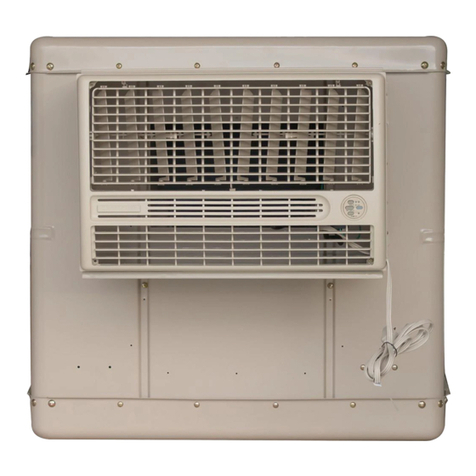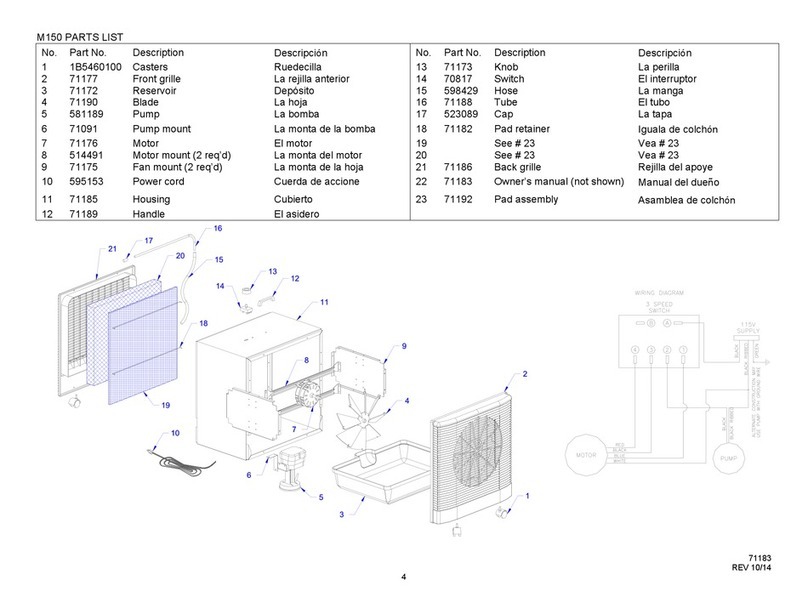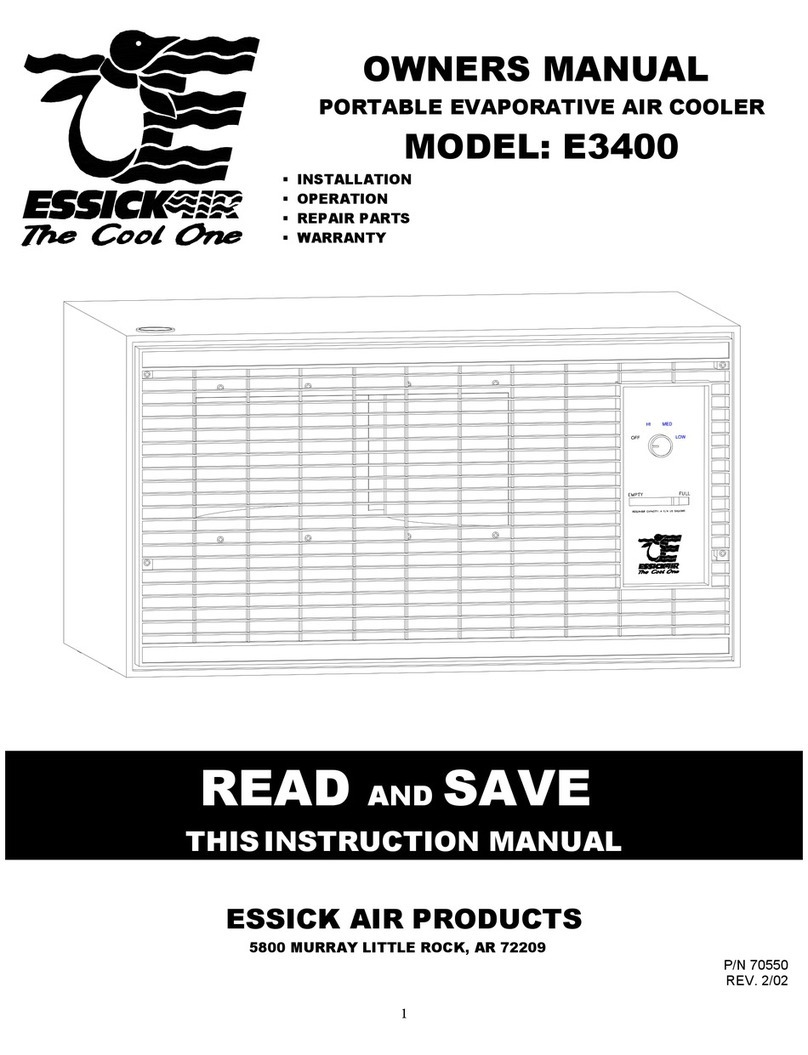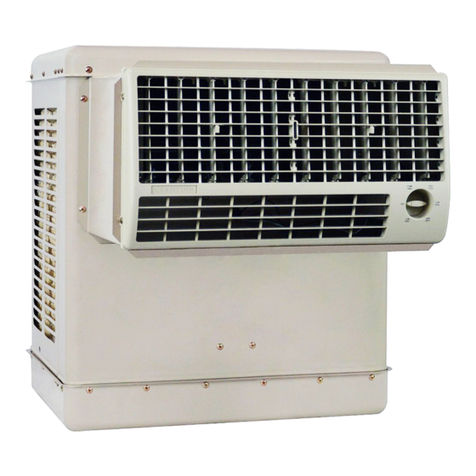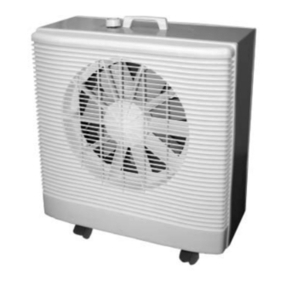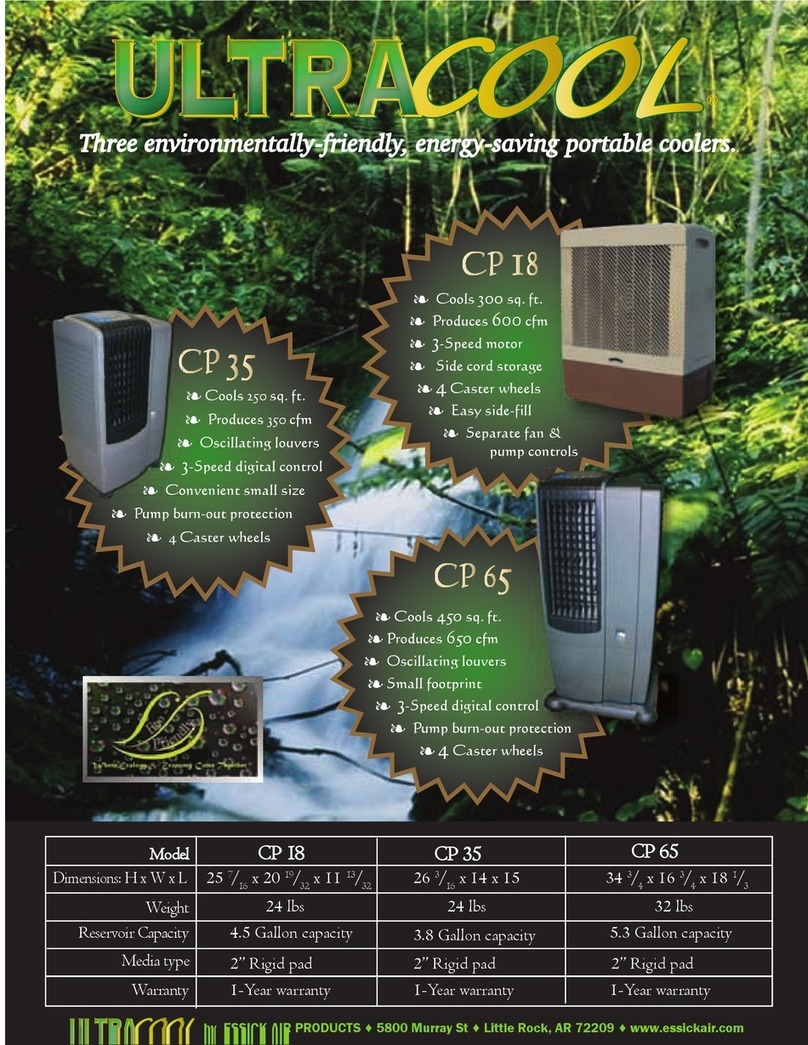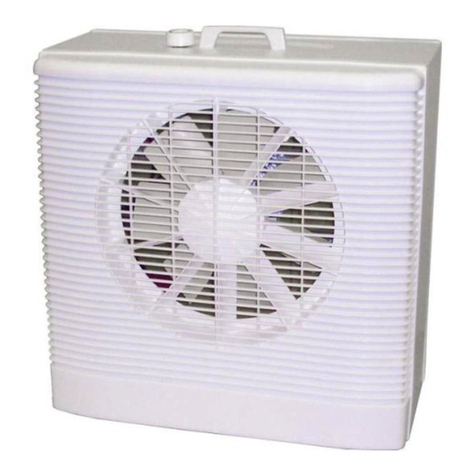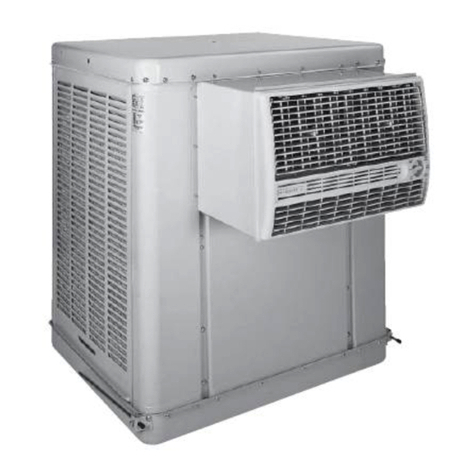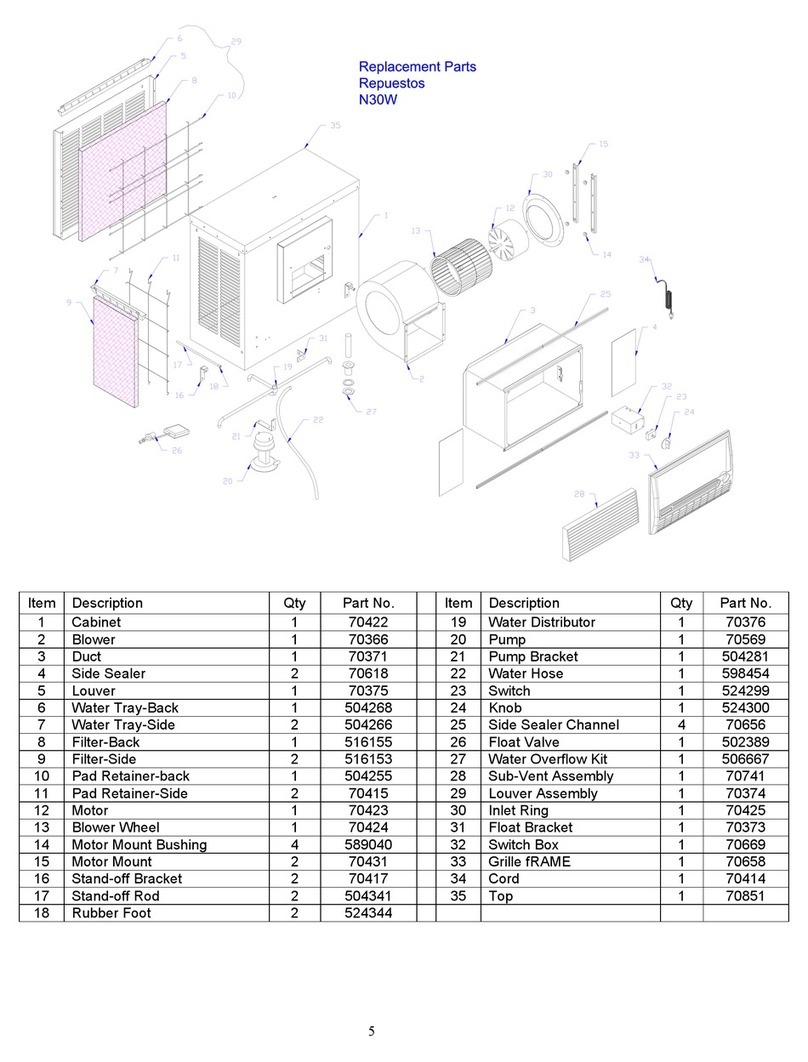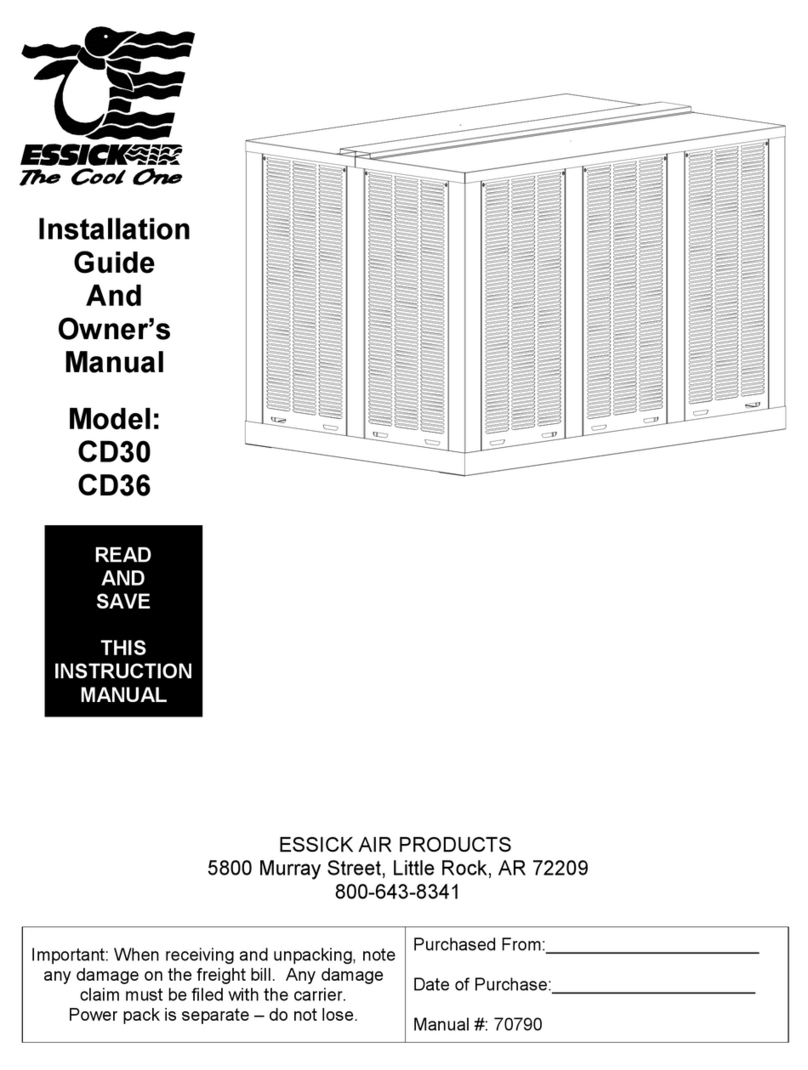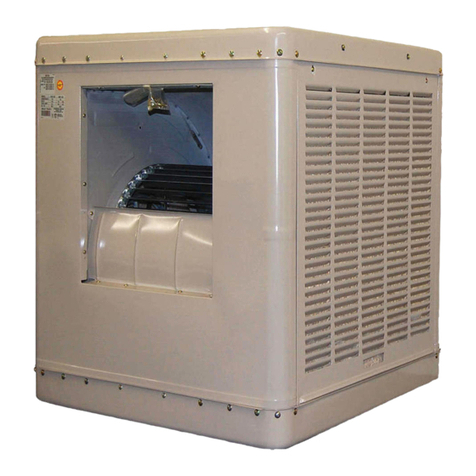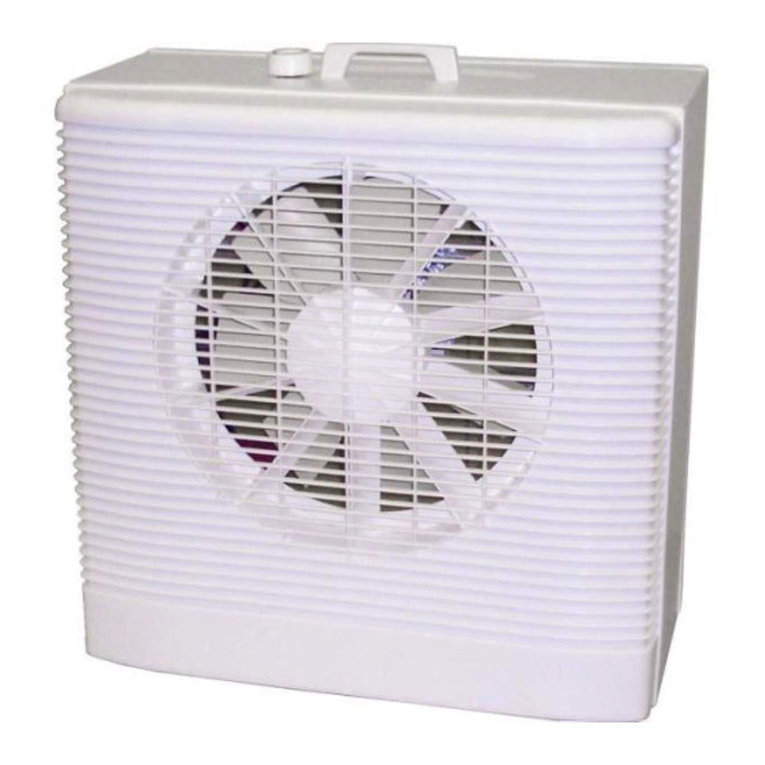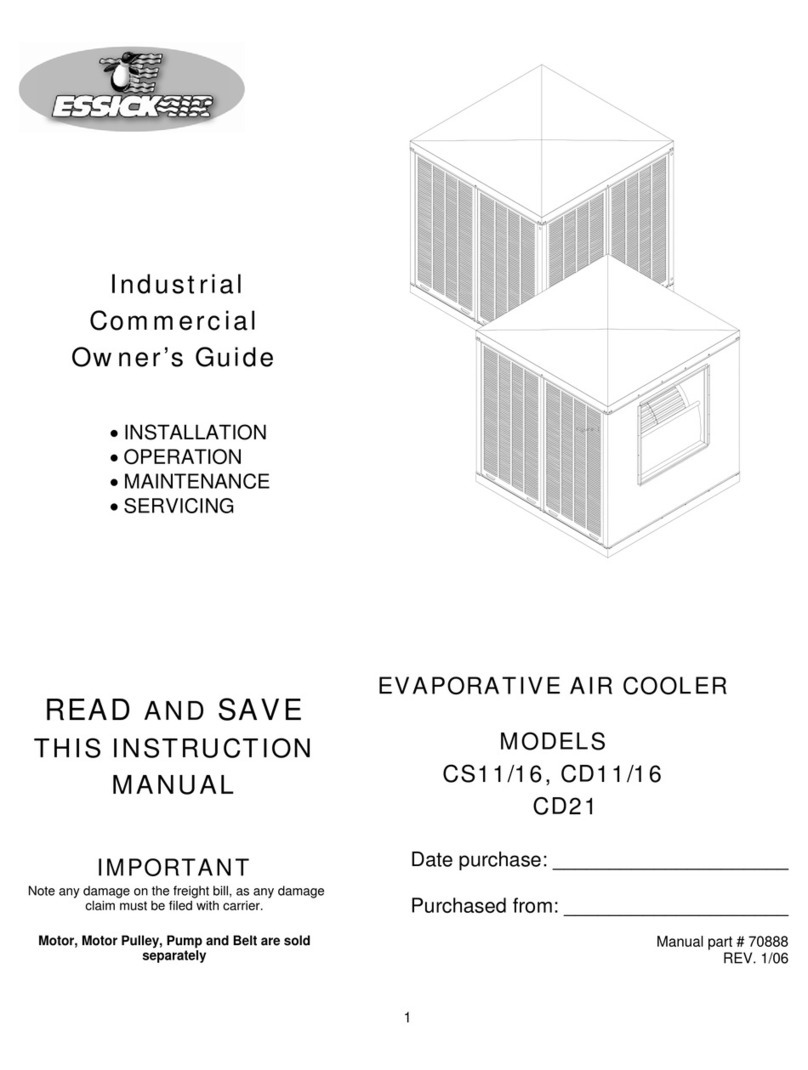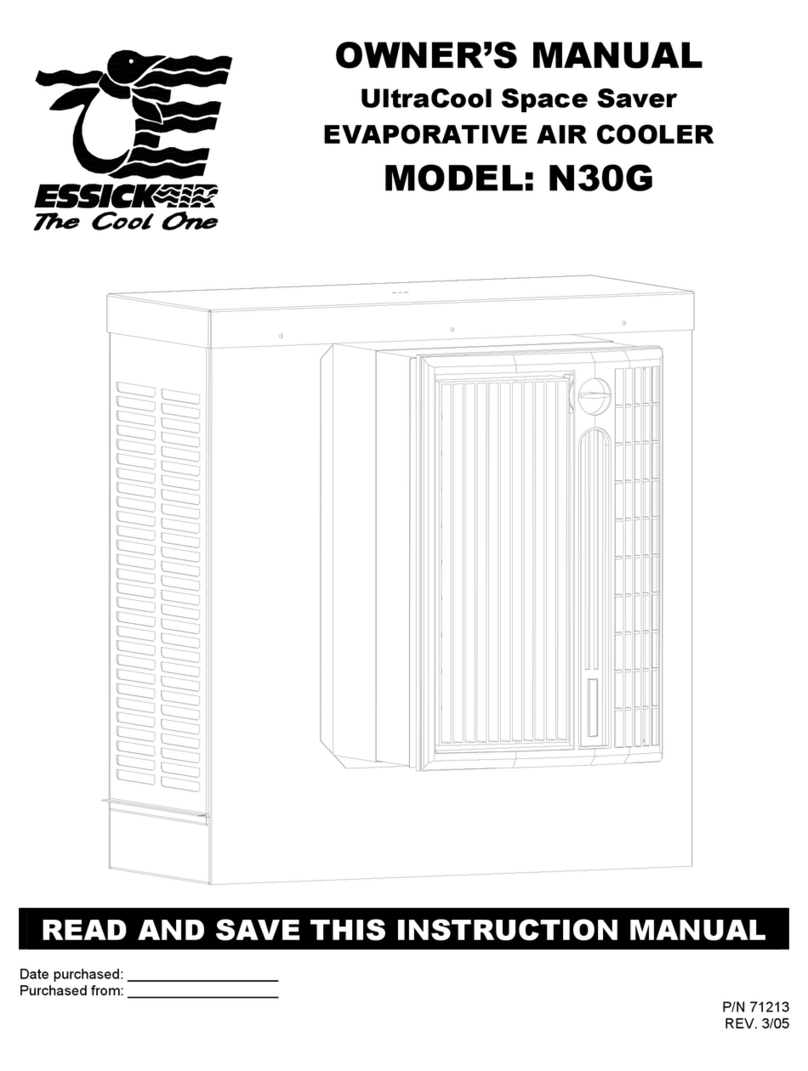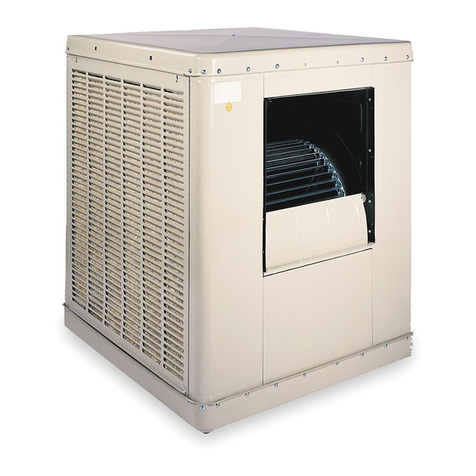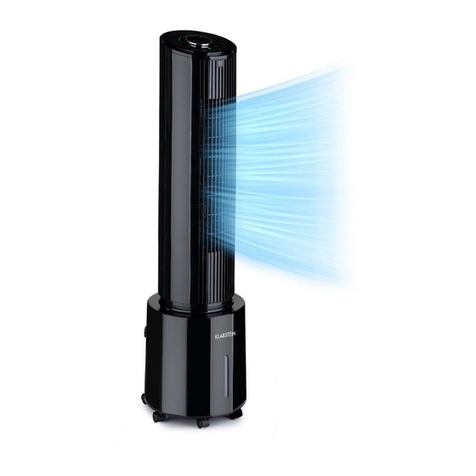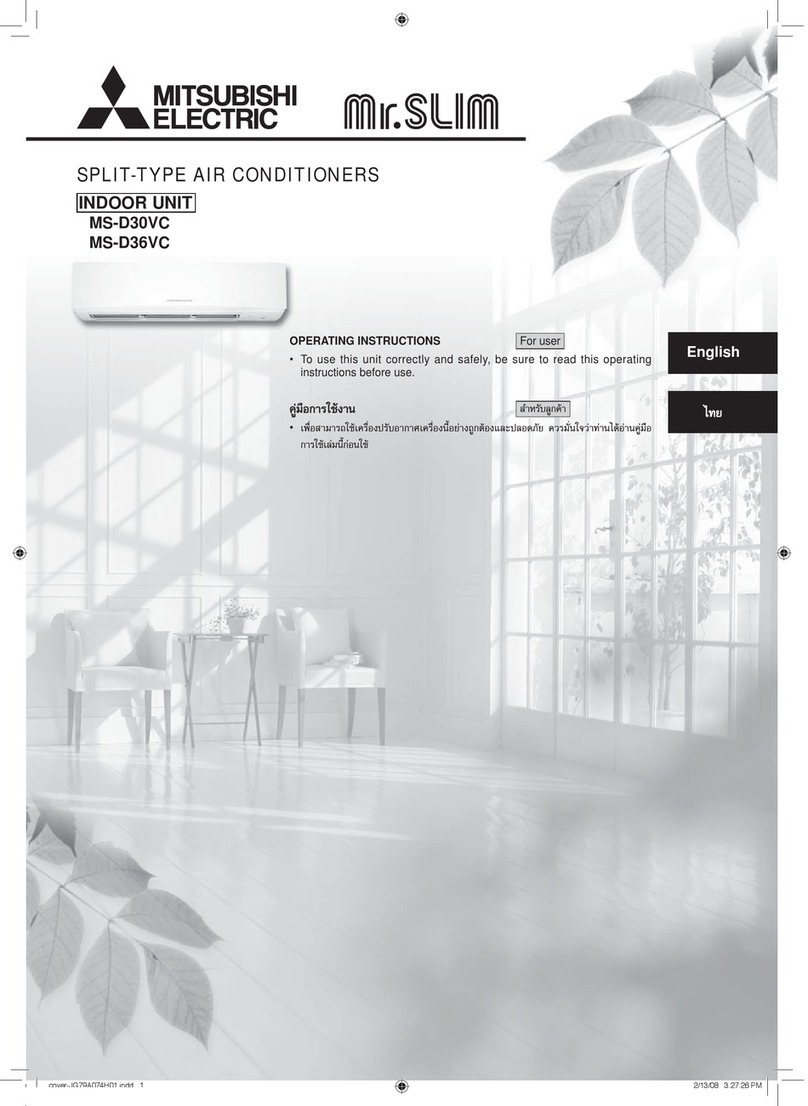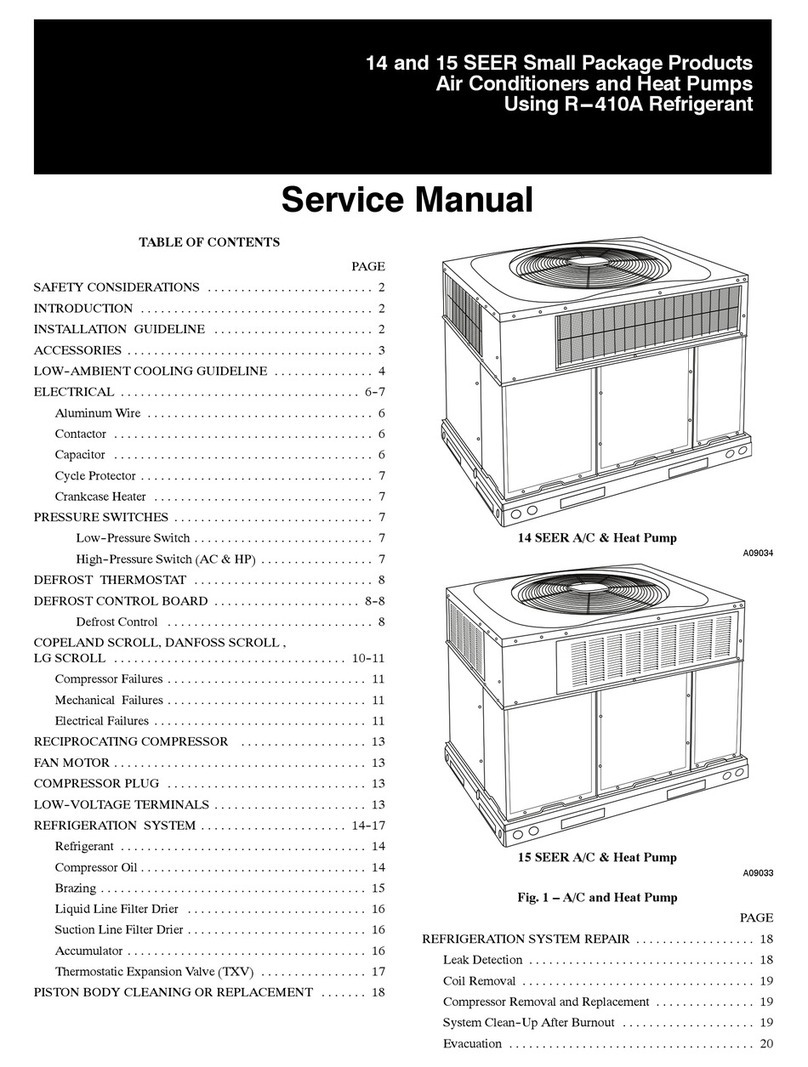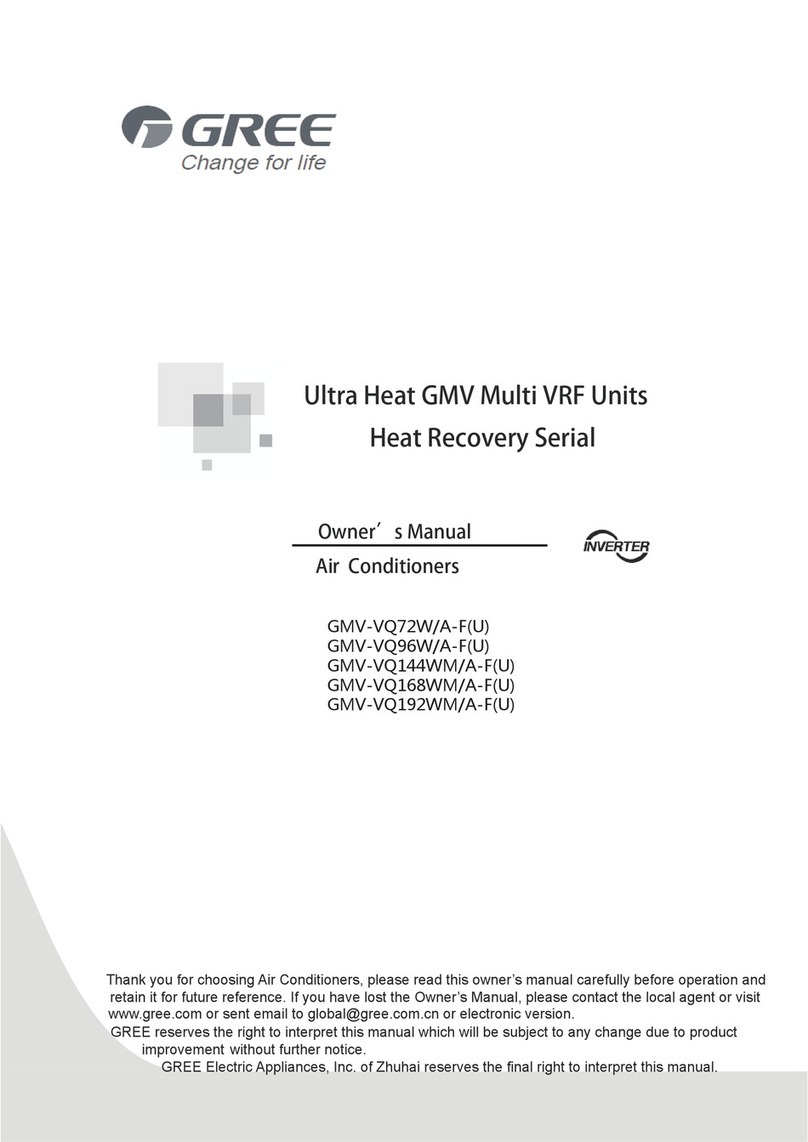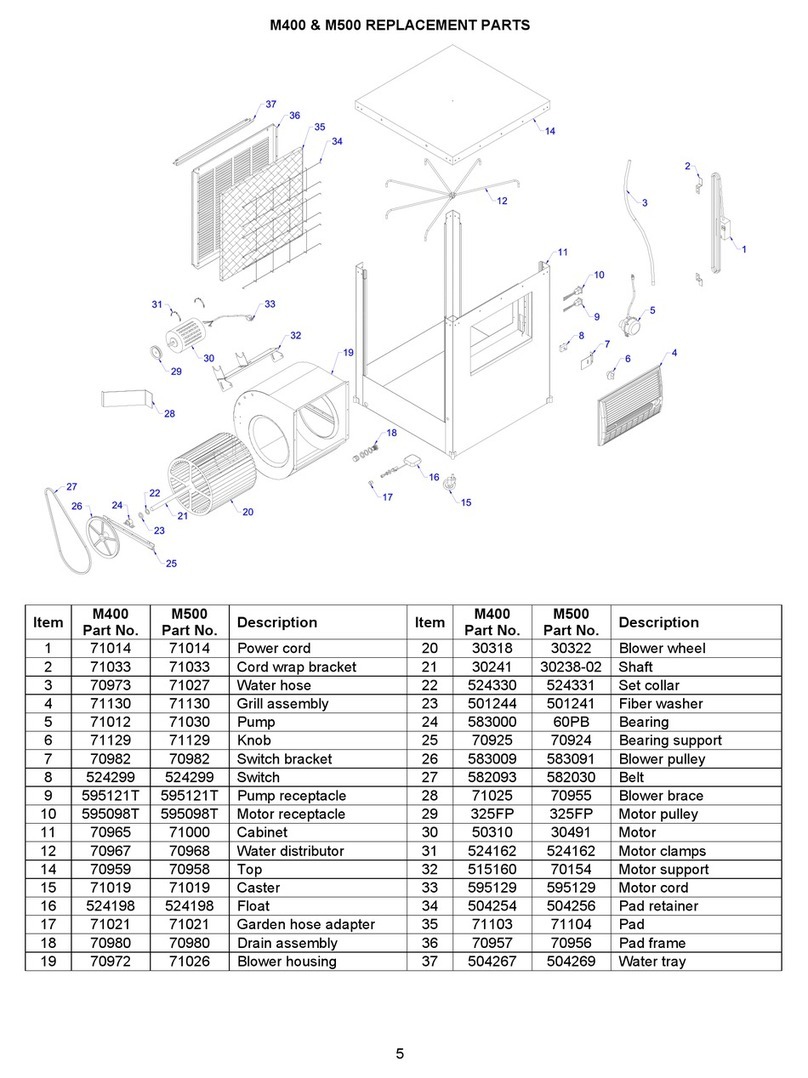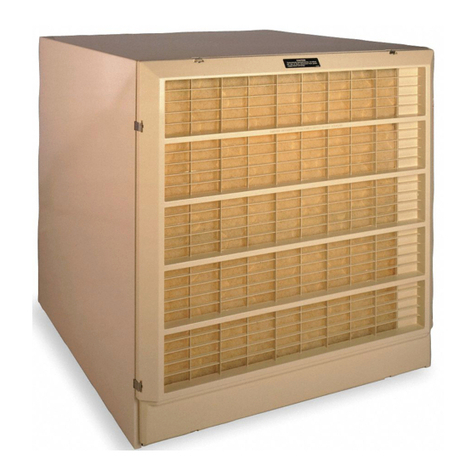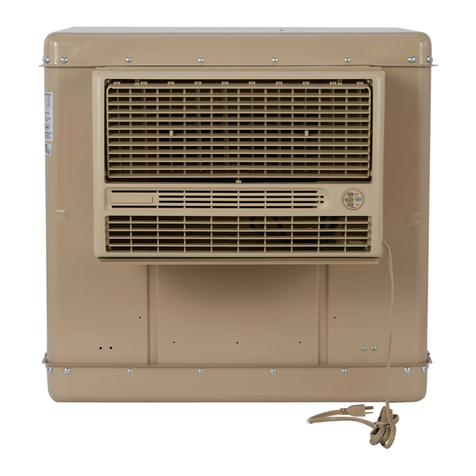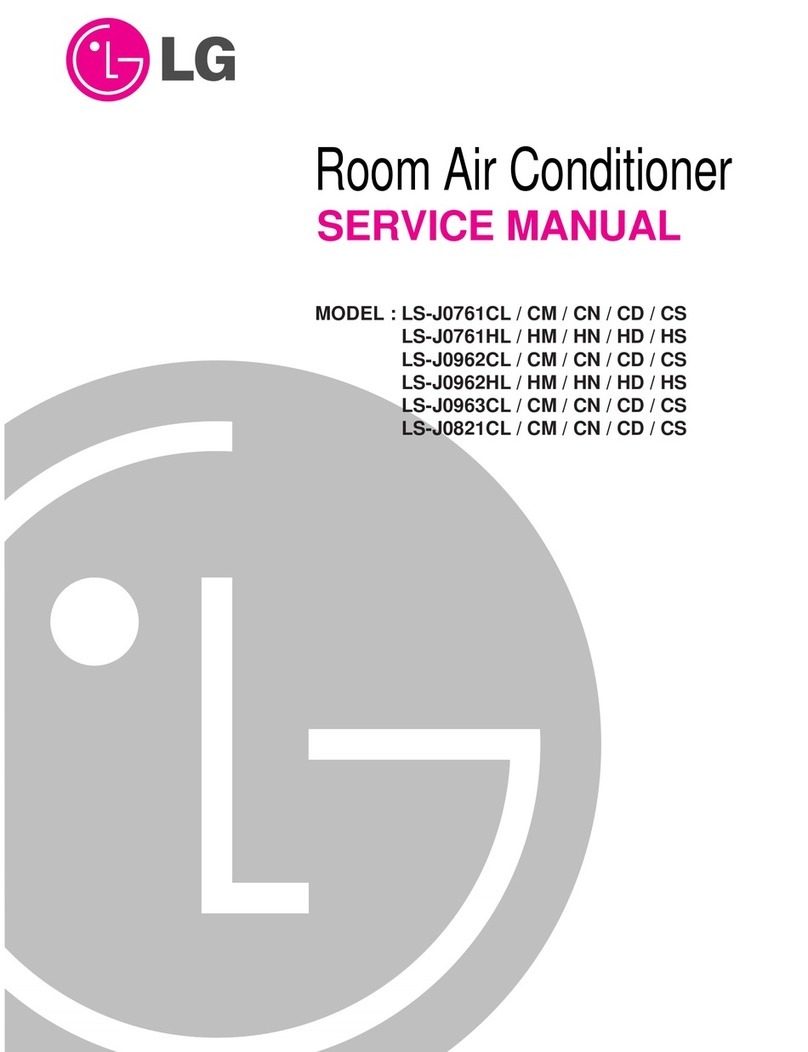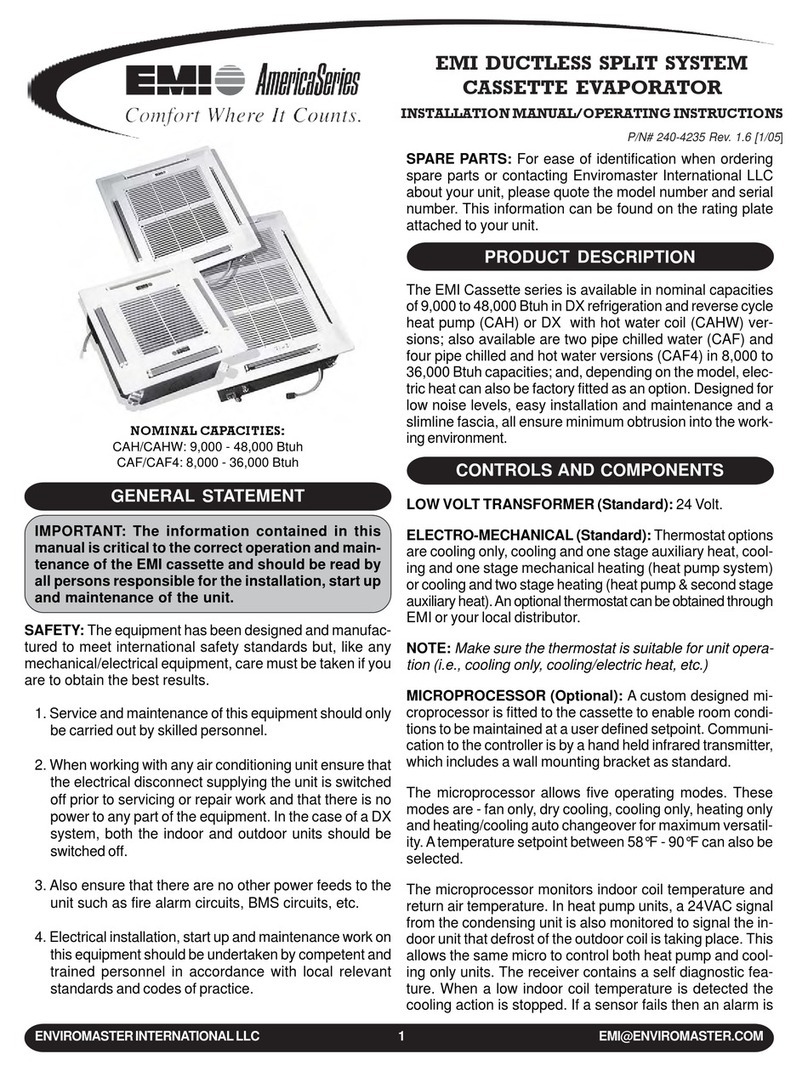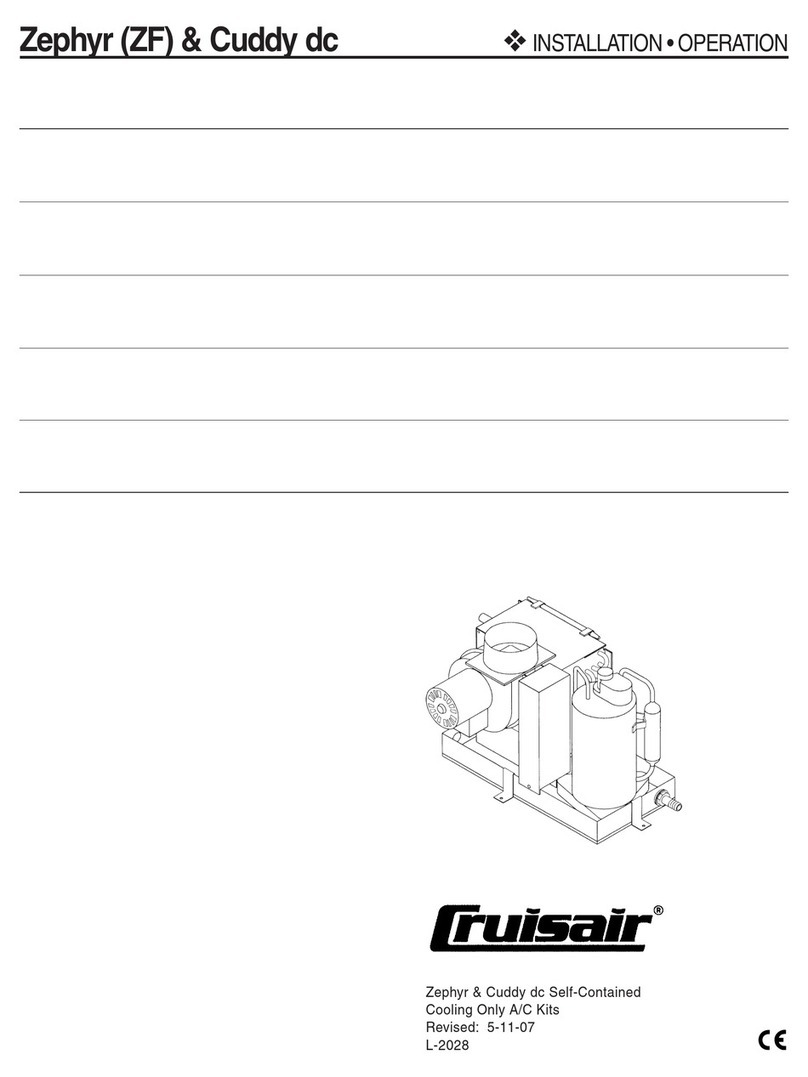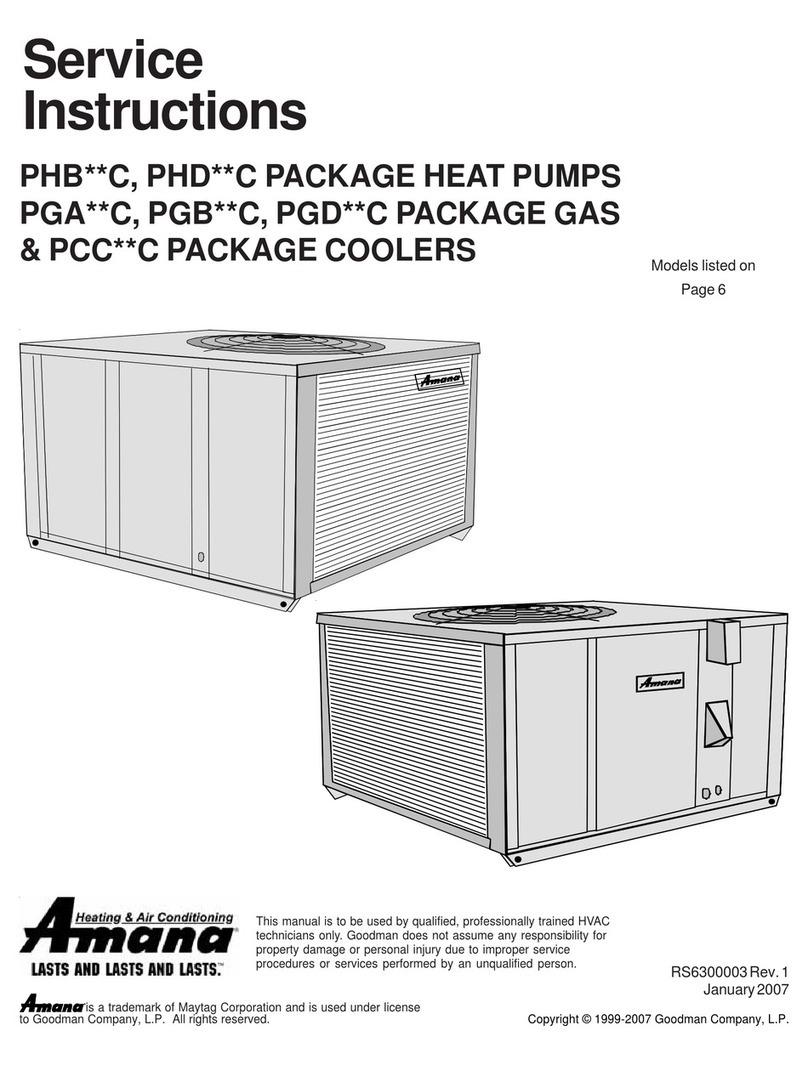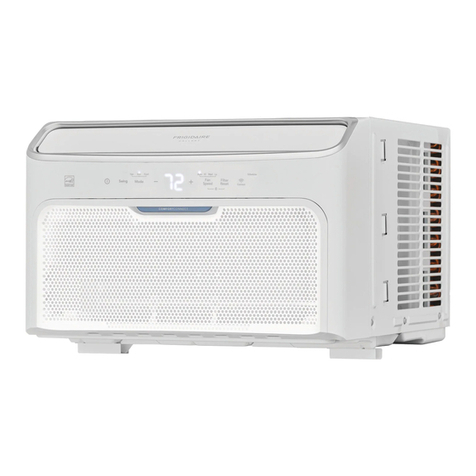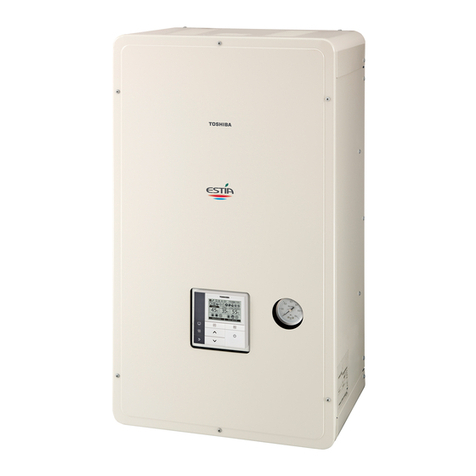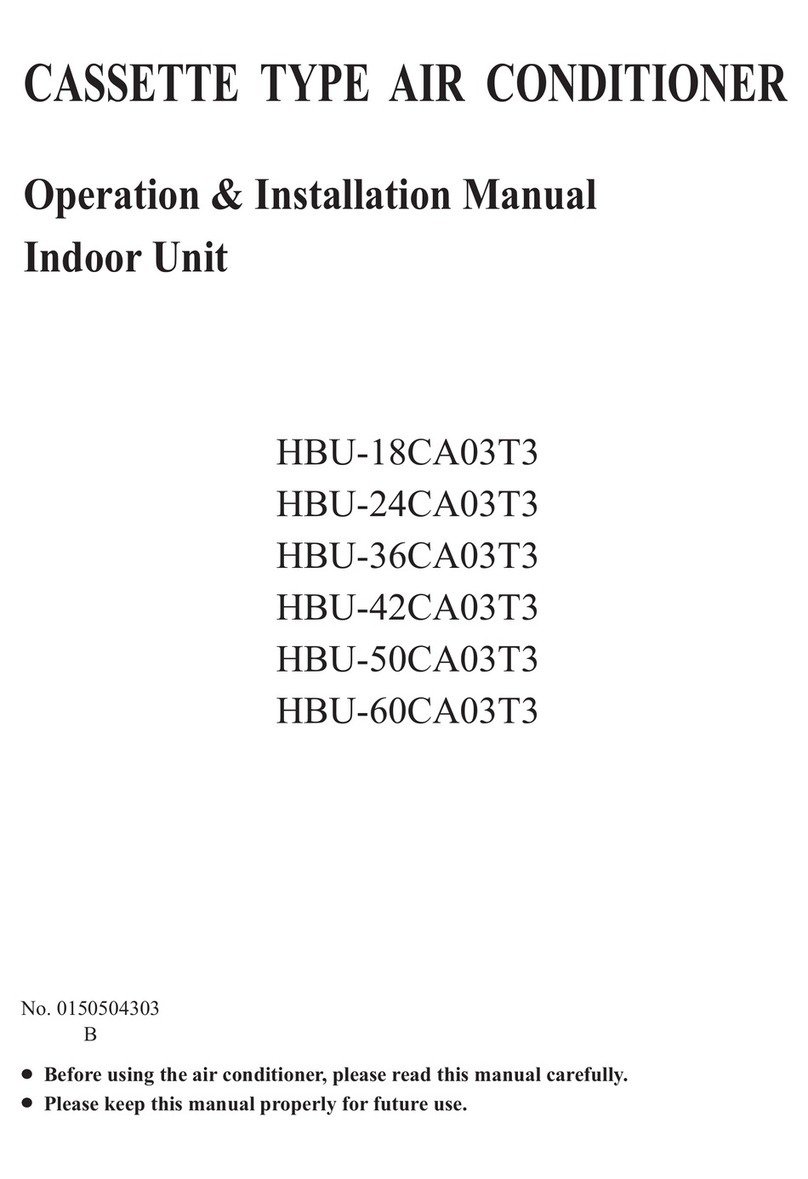
8110496
LEA Y CONSERVE ESTAS INSTRUCCIONES
REGLAS DE SEGURIDAD
1. Lea las instrucciones con cuidado.
2. Las conexiones eléctricas deben ser hechas por un elec-
tricista competente, para que todo el cableado eléctrico
cumpla con los requisitos establecidos en su localidad.
3. La unidad debe estar APAGADA y DESCONECTADA de
la electricidad cuando se instale o haga cualquier mante-
nimiento.
4. Su enfriador funciona sólo con corriente alterna de 120
voltios, 60 Hz. (ciclos).
5. El motor y la bomba están conectados con la tierra, y se
apagarán automáticamente en caso de sobrecalentamien-
to. Los motores volverán a funcionar cuando se enfrían.
6. Enchufe una bomba del enfriador evaporativo solamente y
nada más al receptáculo de la bomba.
ADVERTENCIA: Para reducir el riesgo de incendio o
toques eléctricos, no use este ventilador con ningún “dis-
positivo de estado sólido para controlar la velocidad del
ventilador.”
ENFRIAMIENTO POR EVAPORACION
El enfriamiento por medio de evaporación es la manera de la
naturaleza de refrescarse. Cuando el aire se mueve sobre
una superficie mojada, se evapora el agua y se absorbe el
calor. Al salir de una piscina con el viento que sopla usted
se siente fresco, aunque el aire puede ser caliente. El cuer-
po humano sí mismo es refrescado principalmente por la
evaporación del sudor.
Este enfriador funciona usando el mismo principio. El aire
se traza a través de los filtros mojados donde el aire se en-
fría por medio de evaporación y después circula a través del
edificio. Se hace frío de la sensación cuando tiene esta com-
binación del aire enfriado y del movimiento del aire sobre la
piel.
A diferencia de los acondicionadores de aire que recirculan
el aire, un enfriador evaporativo trae continuamente por den-
tro el aire fresco mientras agota el aire viejo. Se reemplaza
completamente el aire cada 2 a 4 minutos, abriendo las ven-
tanas o las puertas o una combinación de ambas. El aire es
siemprefresco,noes viciado, cargado dehumoyolorescomo
ocurre con los sistemas de aire acondicionado a base de
refrigeración.
OPERACION
•La posición PUMP. El interruptor tiene seis posiciones.
Ajuste el interruptor a la posición PUMP (bomba) para po-
nerenmarchalabombasinelventilador. Paramejor resultado
ponga en marcha la bomba por unos cuantos minutos para
mojar los filtros antes de poner en marcha el ventilador.
INSTALACION
INSTALAR EL ENFRIADOR
PRECAUCION: La superficie en que ha de colocarse
el enfriador deberá aguantar el peso completo de la uni-
dad cuando ésta está en funcionamiento. (Para saber
este peso, vea la tabla de especificaciones.)
•Los posiciones HIGH COOL y LOW COOL. Ajuste el inte-
rruptor a la posición HIGH COOL o LOW COOL para poner
enmarchaelventiladoraunavelocidad alta o baja junto con
la bomba. Ajuste el interruptor a la posición LOW COOL
cuando posible. Esta velocidad baja de la ventilador per-
mitequeelairesequedamás de largo en los filtros mojados
y de tal modo produce un aire más fresco.
•Los posiciones HIGH VENT y LOW VENT. Ajuste el inte-
rruptor a la posición HIGH VENT (alta) o LOW VENT (baja)
para poner en marcha el ventilador a una velocidad alta o
baja sin la bomba. Este es útil en noches frescas o cuando
se desea un ventilador solamente.
¿CUANTO DEBE ABRIR LAS VENTANAS?
Un concepto a menudo entendido mal de enfriamiento por
evaporación es la cantidad de aire que debe ser agotada.
Cuánto debe usted abrir sus ventanas? El hecho es que la
mayoría de la gente no abre sus ventanas bastante. Los dos
métodos siguientes le ayudarán.
EL METODO DE EQUILIBRAR EL AIRE
1. Tome un pedazo de papel de seda y córtelo a lo largo en
3 tiras iguales.
2. Ponga en marcha a su enfriador a “High Cool”.
3. Abra una ventana por lo menos seis pulgadas de ancho
en cada sitio que usted desee refrescar.
4. Tome un pedazo de papel de seda y póngalo contra la
pantalla de la ventana abierta más lejos de la apertura del
enfriador. Suéltalo al papel de seda. Hará una de tres
cosas:
SI: Se caiga.
ENTONCES: CIERRE todas las ventanas una pulgada e
intente el paso 4 otra vez.
SI: Se queda contra la pantalla con fuerza.
ENTONCES: ABRA todas las ventanas una pulgada e in-
tente el paso 4 otra vez.
SI: Se queda ligeramente contra la pantalla.
ENTONCES: PERFECTO. Se ha acabado. Goce del aire
refrescante.
NOTAS:
• Al poner el enfriador a “Low Cool”, usted debe reequilibrar
el aire de su hogar. Repita el paso 4.
• Al equilibrar el aire de su hogar usted puede refrescar al-
gunas áreas más que otras abriendo esas ventanas más y
cerrando las otras por la misma cantidad. Repita el paso
4. Asegurarse de que el aire de su hogar sea equilibrado.













